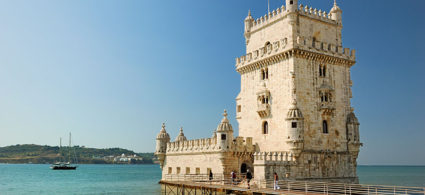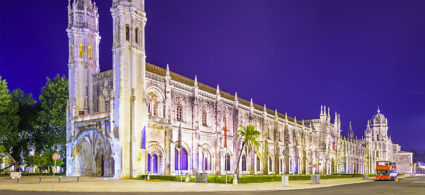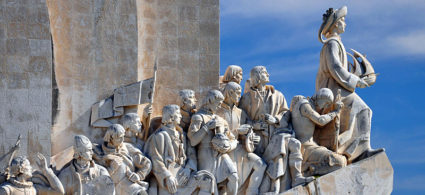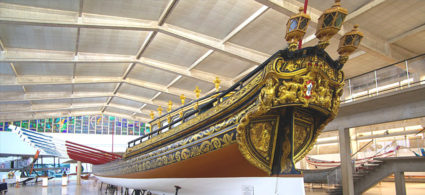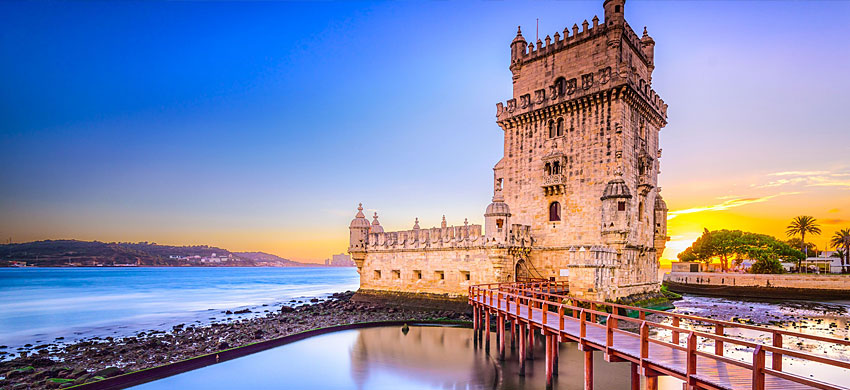

For some tourists Belém is a “gateway” from the center of Lisbon; it is located just 6-7 km from Rossio square, but it is actually an independent area of the city if compared to more central districts like Baxia, Chiado, and Alfama.
Located on the shores of the Tagus river, Belém is an enchanting place to visit, especially on a sunny day thanks to its riverside that runs for kilometers, as well as its wide open spaces with parks and gardens, and so many monuments in Manueline style shining under the sunshine.
If you happen to be in Lisbon on a rainy day don’t panic: there are several indoor tourist attractions in this area, starting from the very famous Belém Tower that will keep you busy (and dry) all day long.
There is no ocean here, as we are located on the mouth of a river; yet the Belém district has its own sea charme.
Maybe it is connected to the fact that a very special expedition that marked the history of maritime conquers of Portugal departed from here: we are talking about Vasco de Gama who in 1497 left on a two years journey across the Indies. Since that moment endless treasures and goodies arrived to Portugal. Still today Belém celebrates the triumph of navigation.

The most famous monument of Belém is its majestic Belém Tower, which seems to emerge from the waters of the Tagus river and stands against the blue sky of Lisbon. It was built in 1515 for defensive purposes and today it has become one of the symbols of the times of the great maritime discoveries. Its color is grey and it melts different elements and styles like Gothic, Bizantine, and Manueline. It is so astonishing that it was declared a UNESCO World Heritage Site.

Another monument symbol of the great colonial past of Portugal, and another UNESCO World Heritage Site, is the Jeronimos Monastery (Mosteiro dos Jeronimos), which was built under order of king Dom Manuel I to celebrate the epic venture of Vasco da Gama. The explorer is buried inside the monastery, along with the writers Fernando Pessoa and Luìs de Camões. The Jeronimos – a group of monks that lived inside the monastery for about four centuries – were the spiritual guides of the sailors.
In 1960 the Monument to the Discoveries, or Padrão dos Descobrimentos, was shaped; a huge white stone monument sculpted in the form of a caravel, featuring dozens of figures of the greatest Portuguese explorers. Take the lift and get to the top of the monument to see the view over the river.

A sweet stop in Belém, almost a pilgrimage for dozens and dozens of tourists: welcome to the Antiga Confeitaria de Belém, an historical Lisbonian pastry shop where you can eat the famous pasteis de Belém. We recommend to eat inside rather than to ask for take away; the hall is beautifully decorated with white and blue azulejos.
In the Belém district there are some interesting museums:
The name of the district comes from Holy Mary Santa Maria de Belém, Saint Mary from Bethlehem (in Portuguese Belém); the chapel where Vasco de Gama and his crew spent the night before the epic expedition of 1497 was named after her.
Belém district became part of Lisbon between 1852 and 1885; before it was an independent municipality.
Not many people know that the Belém Tower is also known as the Tower of Saint Vincent.
The Belém Tower overlooks the river and it is connected to the mainland by a wooden platform. Originally the tower was built on an island, but after the deviations of the river due to the earthquake of 1755, the tower was moved to its current position. Also the Jeronimos Monastery in the past was caressed by the river.
The Monument to the Discoveries that we see today is not the original one. Its first version of 1940 was destroyed because it was made with poor quality materials and therefore it could crush anytime.
City Card allow you to save on public transport and / or on the entrances to the main tourist attractions.

